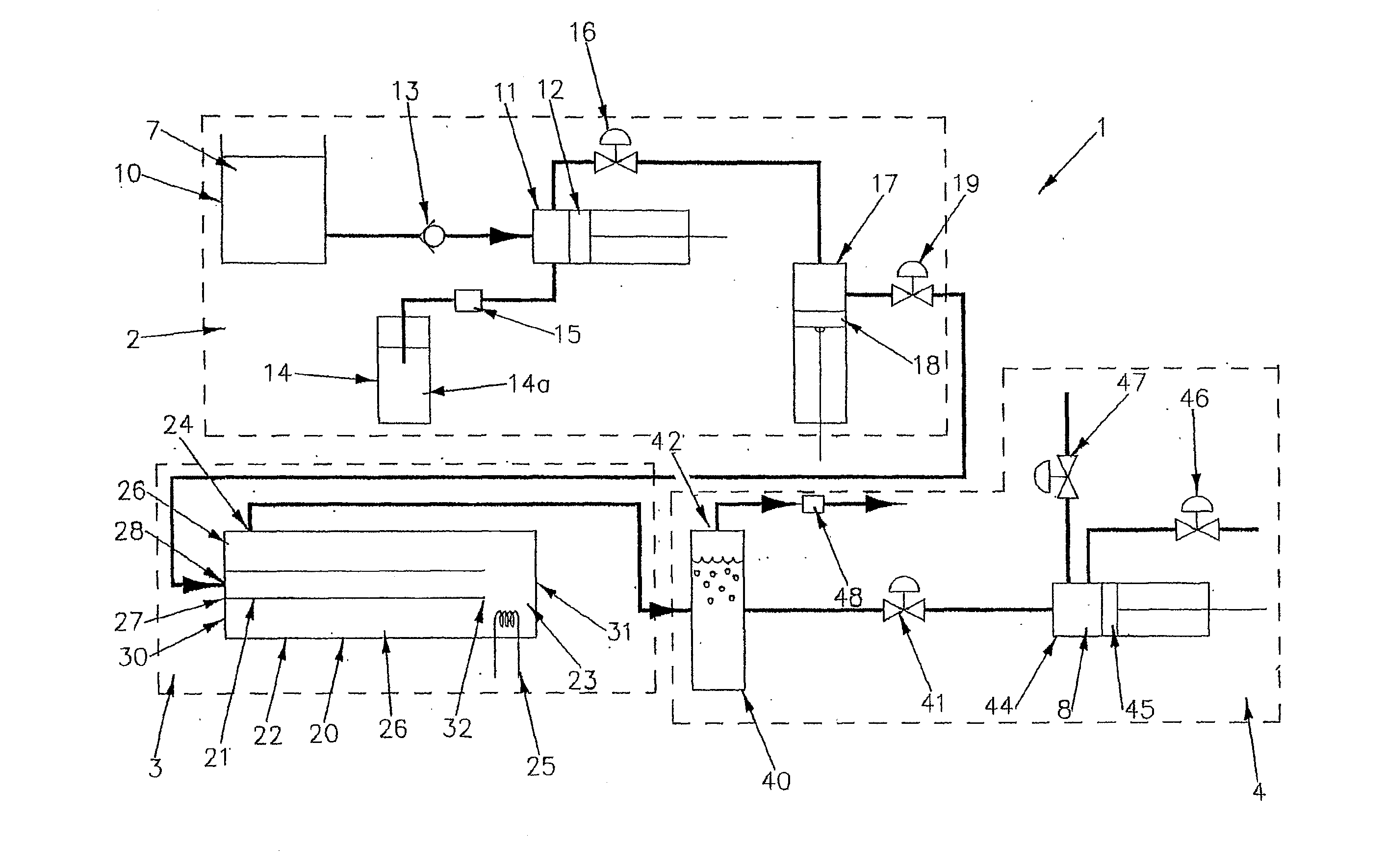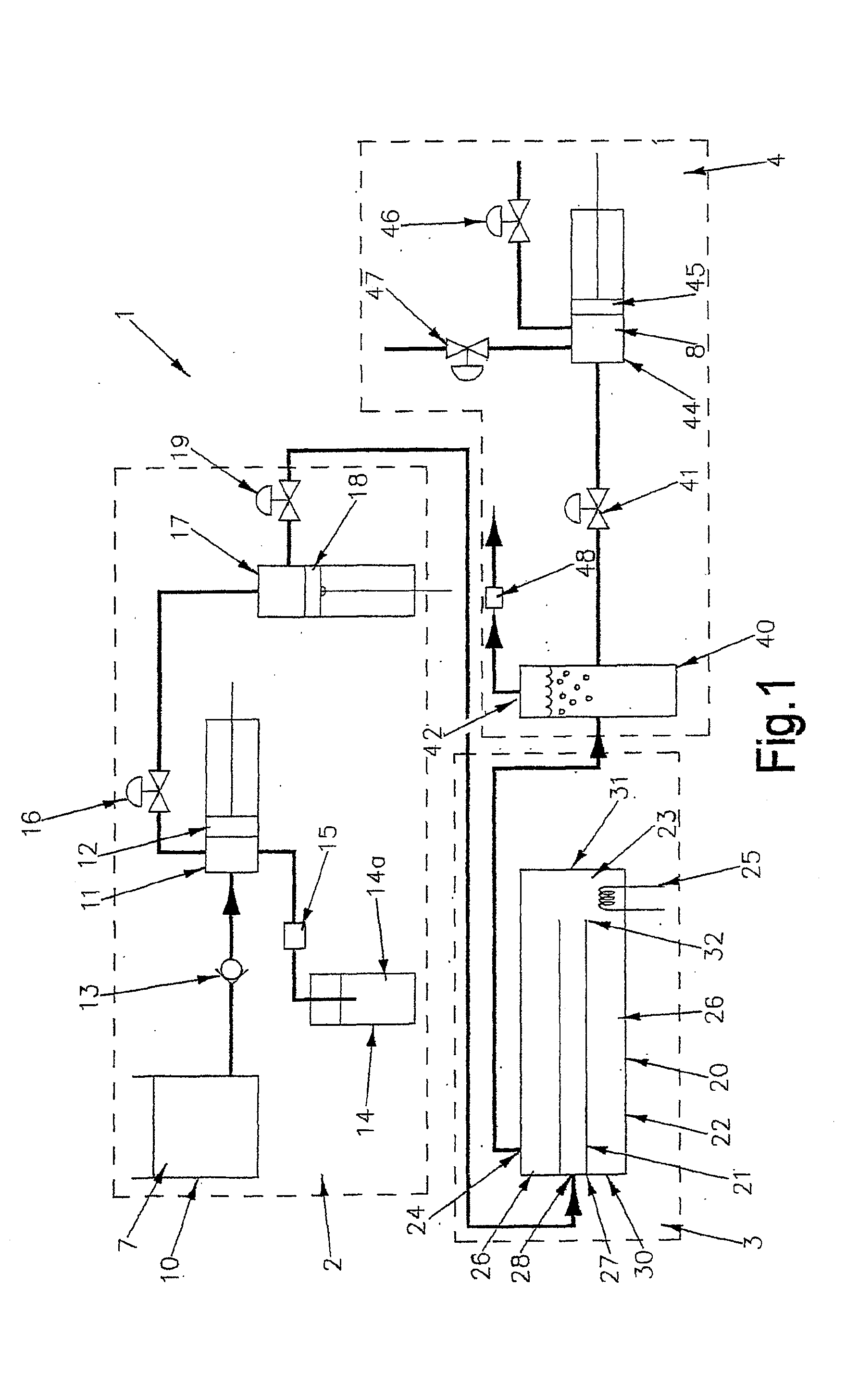System and process for the treatment of raw material
- Summary
- Abstract
- Description
- Claims
- Application Information
AI Technical Summary
Benefits of technology
Problems solved by technology
Method used
Image
Examples
example 1
[0144]Drycleaning sludge was the raw material processed in this example. This was the waste material from a drycleaning operation from which the majority of the perchloroethylene had been removed from the sludge prior to processing by the invention. The remaining concentration of perchloroethylene in the raw material was about 0.8%.
[0145]About 30% and 50% water was added to the raw material to form the feedstock. An additive of sodium hydroxide in water was then added to the feedstock. The feedstock and additive mixture was processed in the reaction chamber at about 280° Celsius and at a pressure of about 150 bar.
[0146]The time between charges was about 180 seconds and the processing vessel was 9 times the charge size.
[0147]Under these conditions, the resultant raw product stream had less than 30 ppm perchloroethylene remaining and it could be disposed of safely. Thus, the system and process of the invention helped to remove perchloroethylene that contaminated the drycleaning sludge...
example 2
[0148]An inorganic cyanide waste was the raw material processed. No additional water or additive was needed.
[0149]The feedstock was processed at 280° Celsius+ / −30° Celsius and at 150+ / −50 bar with 180 seconds between charges.
[0150]The raw product included ammonia, which can be neutralised or recovered. The product stream was in need of further processing but no longer contained any significant amount of cyanide. Thus, the process of the invention helped to remove contaminating cyanide from the raw material
example 3
[0151]In this example, algae was the raw material processed by the system and process of the invention. Between 1% and 30% water was left in the algae to form a pumpable feedstock.
[0152]An additive of 5% Na2CO3 was then added and the feedstock and additive mixture was processed at about 340° Celsius and at about 200 bar With 800 seconds between charges.
[0153]The raw product stream contained kerogen, which had a 37% yield of light crude oil and also contained waste that included Na2CO3. Thus, the system and process of the invention was used to produce material from which an alternative fuel similar to mineral crude oil could be produced.
PUM
 Login to View More
Login to View More Abstract
Description
Claims
Application Information
 Login to View More
Login to View More - Generate Ideas
- Intellectual Property
- Life Sciences
- Materials
- Tech Scout
- Unparalleled Data Quality
- Higher Quality Content
- 60% Fewer Hallucinations
Browse by: Latest US Patents, China's latest patents, Technical Efficacy Thesaurus, Application Domain, Technology Topic, Popular Technical Reports.
© 2025 PatSnap. All rights reserved.Legal|Privacy policy|Modern Slavery Act Transparency Statement|Sitemap|About US| Contact US: help@patsnap.com



